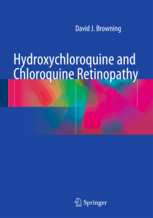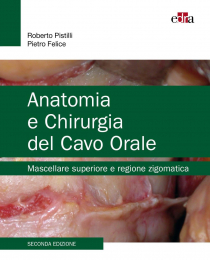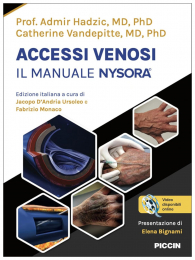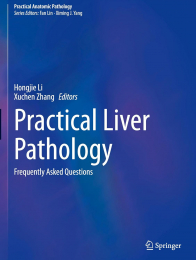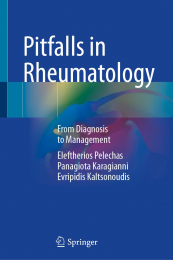Non ci sono recensioni
- First dedicated text on clinical management of ocular toxicity of hydroxychloroquine and chloroquine
- Written for the practicing ophthalmologist, rheumatologist, dermatologist, and internist
- Different treatment guidelines from around the world presented
- Covers fundamentals, including pharmacology, toxicology, toxicity screening and evolution of the drugs' use
- Lays out important financial and medico-legal considerations, including coding and reimbursement and the clinician’s legal responsibility
Malpractice settlements are large for undetected hydroxychloroquine and chloroquine toxicity which, if untreated, can lead to permanent loss of central vision. Knowledge of the ocular toxicity of these drugs has increased during the past fifty years as their use has expanded. Hydroxychloroquine and Chloroquine Retinopathy is the first single-source book on the subject and is essential for the practicing ophthalmologists, rheumatologists, dermatologists, and internists who prescribe these drugs. It covers clinical topics such as signs and symptoms of toxicity, toxicity screening, ancillary testing, to whom and why the drugs are prescribed and dosing considerations. Additionally, the book addresses practice management considerations, including coding, reimbursement and equipment costs, and the medico-legal responsibilities of the rheumatologist and of the ophthalmologist. Guidelines for the management of hydroxychloroquine and chloroquine vary around the world and differences between the guidelines of the United Kingdom, the United States, and other countries are identified. The book concludes with a collection of case examples illustrating common clinical scenarios and their management. This book is a “must-have” resource for physicians who use these drugs.
Contents
1 Preclinical Foundations: Relevant Anatomy
and Physiology ............................................................................... 1
1.1 Anatomy and Histology ......................................................... 2
1.2 Microanatomy of the Retina .................................................. 4
1.3 Vascular Anatomy .................................................................. 13
1.4 Immunology ........................................................................... 14
1.4.1 Innate Immunity and Toll-Like Receptors ................. 14
1.4.2 Adaptive Immunity .................................................... 17
1.5 Pharmacology and Toxicology .............................................. 23
1.5.1 Acid–Base Chemistry................................................. 23
1.5.2 Dose–Response Relationships ................................... 24
1.5.3 Pharmacokinetic Relationships .................................. 24
1.6 Summary of Key Points ......................................................... 30
References ....................................................................................... 30
2 Pharmacology of Chloroquine and Hydroxychloroquine ......... 35
2.1 History ................................................................................... 35
2.2 Chemistry ............................................................................... 36
2.3 Pharmacokinetics and Tissue Distribution
of the 4-Aminoquinolines ...................................................... 39
2.3.1 Absorption .................................................................. 39
2.3.2 Distribution and Pharmacokinetics ............................ 39
2.3.3 Steady-State Concentration of 4-Aminoquinolines
in Various Organs ....................................................... 41
2.3.4 Metabolism ................................................................. 44
2.3.5 Excretion and Storage ................................................ 45
2.4 Clinical Uses and Dosing ....................................................... 45
2.5 Pregnancy and Lactation ........................................................ 48
2.6 Mechanism of Action ............................................................. 49
2.6.1 Positive Studies on Mechanism of Action
of 4-Aminoquinolines ................................................ 49
2.6.2 Negative Studies on Mechanism of Action
of 4-Aminoquinolines ................................................ 54
2.6.3 Drug Interactions ........................................................ 55
2.7 Summary of Key Points ......................................................... 55
References ....................................................................................... 56
3 Toxicology of Hydroxychloroquine and Chloroquine
and the Pathology of the Retinopathy They Cause .................... 65
3.1 Toxic Concentrations ............................................................. 66
3.2 Mechanism of Toxicity .......................................................... 67
3.3 Nonretinal Ocular Toxicity .................................................... 68
3.4 Relative Toxicity of Chloroquine
and Hydroxychloroquine ....................................................... 69
3.5 Nonocular Toxicity of Chloroquine
and Hydroxychloroquine ....................................................... 71
3.6 Pathology of 4-Aminoquinoline Retinopathy
and Nonocular Cytopathy ...................................................... 72
3.6.1 Cell Culture and Animal Models................................ 72
3.7 Human Pathology .................................................................. 76
3.8 Summary of Key Points ......................................................... 78
References ....................................................................................... 79
4 Defi nitions of Hydroxychloroquine
and Chloroquine Retinopathy ...................................................... 85
4.1 Summary of Key Points ......................................................... 88
References ....................................................................................... 93
5 Epidemiology of Hydroxychloroquine
and Chloroquine Retinopathy ...................................................... 95
5.1 Demographics of Patients Taking 4-Aminoquinolines .......... 96
5.2 Prevalence and Incidence ...................................................... 96
5.3 Summary of Key Points ......................................................... 102
References ....................................................................................... 103
6 Natural History of Hydroxychloroquine
and Chloroquine Retinopathy ...................................................... 107
6.1 Clinical Setting and Picture for Development
of Chloroquine and Hydroxychloroquine Retinopathy ......... 107
6.2 Symptoms .............................................................................. 108
6.3 Signs of 4-Aminoquinoline Retinopathy ............................... 109
6.3.1 Visual Acuity .............................................................. 109
6.3.2 Stages of 4-Aminoquinoline Retinopathy .................. 110
6.4 Reversibility ........................................................................... 120
6.5 Delayed Onset Retinopathy ................................................... 122
6.6 Progression of Retinopathy .................................................... 122
6.7 Treatment of Retinopathy ...................................................... 124
6.8 Prognosis ................................................................................ 124
6.9 Summary of Key Points ......................................................... 127
References ....................................................................................... 128
7 Risk Factors for Hydroxychloroquine
and Chloroquine Retinopathy ...................................................... 133
7.1 Age ......................................................................................... 135
7.2 Gender .................................................................................... 136
7.3 Daily Dose Adjusted for the Lesser of Ideal
and Actual Body Weight (Adjusted Daily Dose) ................. 137
7.4 Cumulative Dose .................................................................. 143
7.5 Duration................................................................................ 145
7.6 Renal Dysfunction ................................................................ 145
7.7 Liver Dysfunction ................................................................ 146
7.8 Preexisting Maculopathy ...................................................... 146
7.9 Genetic Predisposition
and Protection....................................................................... 146
7.10 Preexisting Visual Field Abnormalities ................................ 147
7.11 More Speculative Risk Factors ............................................ 148
7.12 Combinations of Risk Factors .............................................. 149
7.13 Summary of Key Points ....................................................... 150
References ....................................................................................... 151
8 Ancillary Testing in Screening for Hydroxychloroquine
and Chloroquine Retinopathy ...................................................... 155
8.1 Defi ning Normal................................................................... 159
8.2 Principles Common to Ancillary Tests Used
in Screening for 4-Aminoquinoline Retinopathy ................. 160
8.3 Reproducibility of Ancillary Tests ....................................... 166
8.4 Establishing a Prior Probability and Bayesian Inference ..... 169
8.5 Static Automated Perimetry ................................................. 169
8.6 Multifocal Electroretinography ............................................ 191
8.6.1 Fundamentals of Multifocal Electroretinography .... 191
8.6.2 Sources of Variability and Factors That
Infl uence the Multifocal Electroretinogram ............. 194
8.6.3 Normal Values and Reproducibility
of the Multifocal Electroretinogram ......................... 195
8.6.4 Interpretation of Multifocal Electroretinograms ...... 198
8.6.5 Summarizing the Role of Multifocal
Electroretinography in Screening for
4-Aminoquinoline Retinopathy ................................ 202
8.7 Spectral Domain Optical Coherence Tomography ............... 202
8.8 Fundus Autofl uorescence ..................................................... 204
8.9 Fluorescein Angiography ..................................................... 211
8.10 Amsler Grid .......................................................................... 211
8.11 Electrooculogram ................................................................. 213
8.12 Global and Focal Electroretinography ................................. 214
8.13 Color Vision Testing ............................................................. 215
8.14 Scanning Laser Polarimetry ................................................. 215
8.15 Multiple Other Failed or Unadopted Ancillary Tests ........... 216
8.16 Relative Sensitivity and Specifi city
of Ancillary Screening Tests for 4-Aminoquinoline
Retinopathy .......................................................................... 218
8.17 Challenges ............................................................................ 219
8.18 Summary of Key Points ....................................................... 220
References ....................................................................................... 220
9 Screening for Hydroxychloroquine
and Chloroquine Retinopathy ...................................................... 227
9.1 Indications for Screening ..................................................... 228
9.2 Baseline Screening ............................................................... 229
9.3 Follow-up Screening Visits .................................................. 229
9.4 Who Should Screen and What Tests Should Be Used?........ 229
9.5 Number Needed to Screen ................................................... 236
9.6 Actual Screening Practice .................................................... 237
9.7 Responses to Positive Results of Screening ......................... 238
9.8 Cost-Effectiveness of Screening
for 4-Aminoquinoline Retinopathy ...................................... 239
9.9 Medicolegal Aspects of Screening ....................................... 240
9.10 Patient Education and Home Medical Records .................... 241
9.11 Screening After Cessation
of Chloroquine of Hydroxychloroquine ............................... 242
9.12 Challenges ............................................................................ 242
9.13 Summary of Key Points ....................................................... 242
References ....................................................................................... 243
10 Clinical Examples in Managing Patients
Taking 4-Aminoquinolines ........................................................... 247
10.1 A Case of Prolonged Toxic Dosing with Evidence
of Premaculopathy ............................................................... 247
10.2 The Importance of the Clinical Estimation
of Pretest Probability of 4-Aminoquinoline Retinopathy
for Proper Interpretation of Ancillary Tests ......................... 253
10.3 Hydroxychloroquine Retinopathy Due to Long- Term
Overdosing, Misinterpretation of 10-2 Visual Fields,
and an Internist’s Unresponsiveness
to a Recommendation to Stop Medication ........................... 253
10.4 A Case of Hydroxychloroquine Retinopathy
in an Overdosed, Regularly Monitored Patient
in Whom the Fundus Changes Were Atypically
Mild and in Which Progression of Damage
Occurred Despite Cessation of Drug.................................... 257
10.5 Hydroxychloroquine Overdosage in a Patient
with Renal Failure ................................................................ 258
10.6 Unexpected Location of Retinopathy with
Misinterpretation of the SD-OCT in a Chronically
Overdosed Patient Taking Hydroxychloroquine .................. 265
10.7 Hydroxychloroquine Monitoring in the Setting
of Preexisting Maculopathy ................................................. 265
10.8 Asymmetric Hydroxychloroquine Retinopathy
in an Appropriately Dosed Patient with Progression
of Retinopathy After Cessation of the Drug ......................... 274
10.9 Screening for Hydroxychloroquine Retinopathy
in a Setting of Confounding Glaucomatous Visual
Field Defects and Preexisting Maculopathy
from Resolved Central Retinal Vein Occlusion
and Macular Epiretinal Membrane....................................... 274
10.10 Interpreting an Abnormal 10-2 Visual Field
in a Patient with a Low Pretest Probability
of Having Hydroxychloroquine Retinopathy ..................... 281
10.11 Summary of Key Points ..................................................... 283
References ....................................................................................... 286
Index ....................................................................................................... 287

